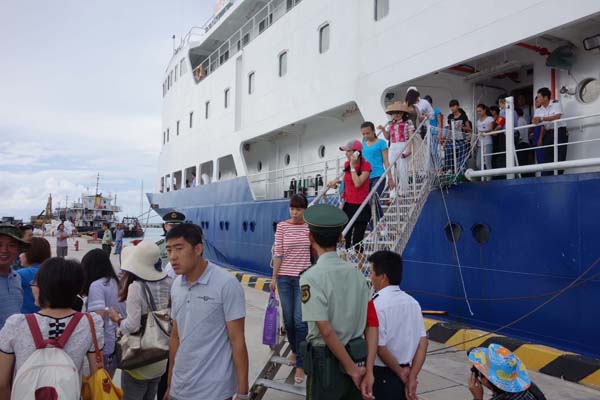

 |
|
The supply ship Qiongsha No 3 takes passengers to Yongxing Island in July. Most of the visitors were to visit their family members who are soldiers stationed on the island. |
Resource rich
Sansha has 80 percent of China's underwater oil and gas resources, while 30 percent of the country's imports and exports travel through its waters, according to the Hainan Provincial Fishery Research Institute.
However, tapping its potential while protecting its fragile eco-system will be a delicate dance.
During the initial infrastructure boom, deputy mayor Zhang Jun insisted environmental protection is being put ahead of economic development.
Groundwater exploration will be suspended by 2015 to protect Yongxing Island, he said, while the city will develop solar and marine power plants to ease pollution.
Environmental monitoring and law enforcement systems will also be established to deal with illegal fishing and dumping, Zhang added.
Some companies have already stepped in to help authorities start the city on a sustainable path, too.
In April, Yingli New Energy, one of about 21 companies registered in Sansha, fitted 120 islet homes with free photovoltaic systems, each worth 5 million and able to generate nearly 70,000 kWh a year.
General manager Wang Qin said his company will design products specially for the market, which he said has huge potential.
China Southern Power Grid also promised to spend at least 300 million yuan over the next five years to turn Sansha into a model of low-carbon consumption, although the grid will only cover Yongxing and Zhaoshu islands.
To further develop in a scientific way, authorities drafted in 13 scholars in the fields of marine biology, environmental protection and land planning to help draw a roadmap for the future.
Among them was Liu Feng, a senior researcher at the National Institute for South China Sea Studies, who predicted: "Major industries in Sansha will be tourism and fisheries".